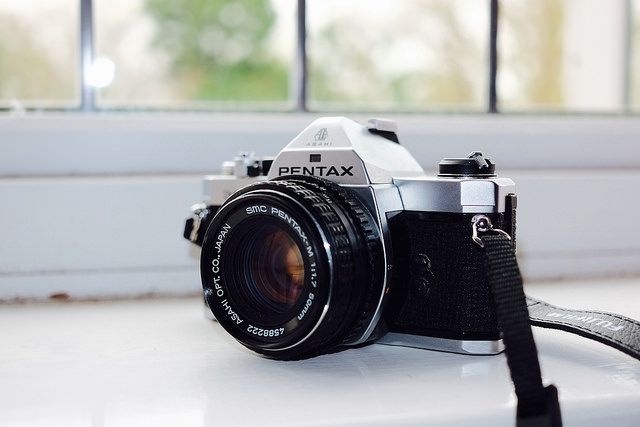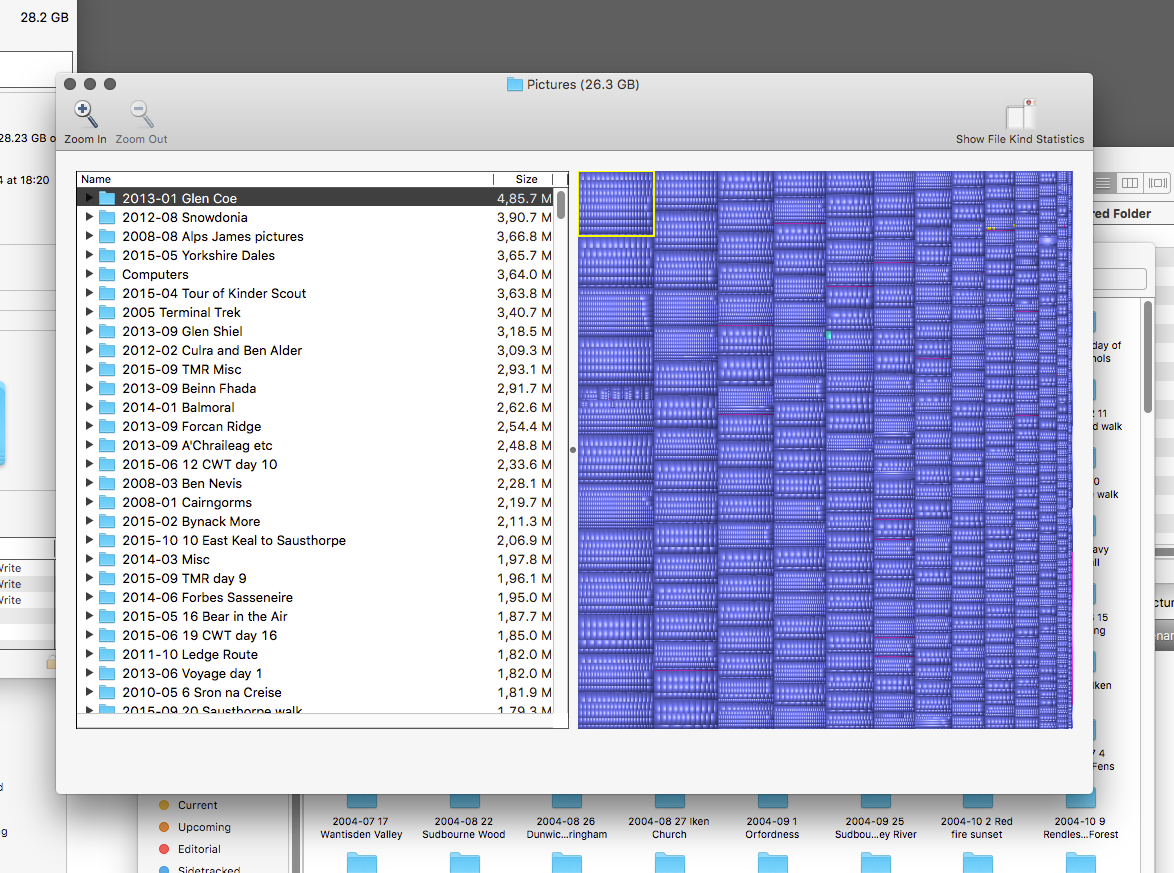The photos you’ll never look at again

Twenty-five thousand. That’s how many photos I had sitting in a folder on my hard disk. Recently I set myself the task of getting my photo collection in order, and I learned some surprising things.
Back in the nineties, the bottom drawer in my bedroom was where I stored my photos – a drawer bursting with wallets full of prints. Some of the wallets had identifying labels scrawled on the cover: THORPE PARK TRIP or YORKS DALES or STUFF 1997. On a Sunday afternoon I’d sometimes open up the drawer and disappear into a photographic voyage of discovery for an hour or two, flipping through stacks of prints, wondering why I’d taken half of them but occasionally finding a good one. A good photo was one that told a story or triggered a memory.
But finding a specific photo was almost impossible, and the sheer physical bulk of all those prints became a burden. Then modern technology came along: iMac G3 in 2001, digital camera in 2002. At last, I remember thinking. Technology will solve everything.
The imperfect workflow that never got replaced
This is what my photographic workflow looked like in 2002.1
- Snap a photo.
- Insert Compact Flash card into the card reader.
- Using the Finder, drag all of the JPEGs into the big ‘Pictures’ folder on the root directory of the 20GB hard disk.
- Make a subfolder called something like ‘Aldeburgh Beach pics Summer’ and put the pictures in there.
- Edit some of the better photos in an image editor. The less good ones would usually be shoved in a further subfolder called ‘Others’.
- Some photos would be destined for blog use.
- A few pictures would be printed, but this was a rare event.
In 2006, I joined Facebook and a further step was added: posting photos to social media.
Despite all the advances in technology since, I still shoot a bunch of photos and drag them all to a subfolder in that same pictures directory, transferred and copied numerous times from computer to computer, gradually becoming so large it now resides on a portable hard disk. Until recently I didn’t even cull the photos I took; I kept everything, without pausing to ask why.
I think it’s all about fear – fear that memories will be lost.
The fear that memories will be lost
I tried migrating to iPhoto once, years ago. After backing up my pictures folder, I tried importing my photos into the application, but it was a disaster. My carefully curated directory structure was destroyed by the importing process. iPhoto arranged everything how it wanted, assuming control over the order of my memories. Although I would probably have become accustomed to it, I was so unnerved that I immediately went back to my old Finder-based pictures folder – reassuring in its predictability and familiarity – and vowed to never use anything of the kind again.
Part of me needed that folder structure I had kept in a certain order for so long. But I didn’t ask myself why. In fact, I rarely navigated the nooks and crannies of this vast memory vault, rarely did more than occasionally skim through some of the better photos (when I could find them). Even then, part of me was aware that I was carrying around thousands of photos that I never looked at, should probably never have even kept.
Attempts at change
In late 2014 I started shooting film for the first time in well over a decade. At first, I got both scans and prints back from the lab, which served to highlight my need for change. In a frighteningly short space of time, I had filled up a physical photo box with prints. I didn’t throw away any of those prints because each photograph had cost money to process.
This box, sitting under my desk, forced me to ask questions about my photography. I’d never really thought about why I took photos.
Sometimes the answer is obvious: to record a memory, to produce a work of art with intrinsic photographic value, or as something destined for publication online or in print. Fair enough so far. But what about that multitude of pictures I never even look at – the ones my eyes glide over when I open an archive of old photos? The photos I somehow thought would be worth taking at the time, but ultimately proved useless? I kept them because just in case, because it feels like sacrilege to destroy them.
My new workflow
I’m attempting to create a more flexible workflow. What I want is to be able to cull and edit photos on my iPad, then upload them to Dropbox. From here, Hazel, running on my Mac, will automatically copy photos into an archive folder before curating them in Dropbox subfolders and uploading them to Flickr.
Great in theory, but first I needed to upload all my existing photos. The Flickr uploader has been running for well over a week, and it’s only processed about half my photos.
A couple of days ago, I decided to do a full audit of all this data to see where I could make savings. I realised it was time to do something about the bloated pictures folder.

Culling my collection
As I looked through every single folder I’d kept, including scanned photos dating back twenty years, I realised I had been preserving a ratio of about 70% useless data to 30% priceless memories.
One of the worst offenders was a trip to the Lake District in 2011. It wasn’t a particularly memorable trip – I did a few scrambles, climbed a few hills, but certainly did nothing to justify saving 1,675 pictures. When I opened that folder I simply felt overwhelmed. I scrolled through rows and rows of identical-looking photos, most of which had no value at all. I realised that over a thousand photos in that folder should either have been deleted upon uploading or probably should never have been taken in the first place.
I started culling. It’s going to take a long time, but the mental burden of all these useless photos is starting to weigh me down. I want to be able to revisit a memory and find a handful of good photos that mean something to me.
Already I have deleted several thousand photos, streamlining my picture library by many gigabytes, and it feels good. I think I can reduce my photo archive by at least 60% without destroying any memories in the process.
Why do we take photos?

Maybe it’s just a natural phase all photographers pass through, but all this has made me think about why we take photos at all.2
Is it to preserve a memory? Fine – but do you really need more than a few well-composed, meaningful photos from a particular day or event?
Is it to create art through the medium of photography? There are only so many really good pictures you can take of a particular view or subject. A deluge of photos dilutes the effect, especially when they’re all uploaded to Facebook to overwhelm your friends.
Is it to somehow prove you were there, or that something happened? To impress people, even? If I’m honest with myself, I think these are sometimes my motivations when sharing photos online, and I’m still making up my mind how I feel about that. It’s why I have an on/off enthusiasm with services like Instagram. I sometimes catch myself in the process of uploading a photo, almost compulsively, and wonder what I hope to gain from doing it. This is an area where ‘less is more’ can, I suspect, yield greater satisfaction and meaning.
For me, photography is about telling stories. I want to bring others into the adventures I’ve enjoyed, or to give myself the power to revisit the memory myself at some later point. I can do that without mindlessly snapping and storing hundreds of photos from a day out.
Shooting film again taught me that you don’t need to take a lot of photos to preserve a memory. One good photo taken at the right time will serve far better. The compulsion to snap everything, to preserve every scrap of memory you can, is meaningless.
From now on, I’m going to try to be more intentional. It’s exhausting to look after a photo library that’s too big to enjoy or manage, and in photography I’ve found that as quantity decreases quality generally increases.
If you’ve been reading this and nodding, ask yourself a simple question: why do you take photos?
Alex Roddie Newsletter
Subscribe here to receive my occasional personal newsletter in your inbox. (For the fun stuff, please consider subscribing to Alpenglow Journal instead!)




